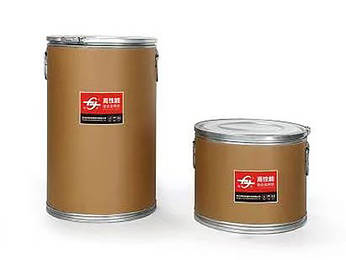Common Aluminum Welding Problems and Solutions: From Oxide Layers to Porosity
Understanding Common Aluminum Welding Issues
Oxide Layer Formation and Its Impact
Aluminum naturally forms a thin oxide layer on its surface when exposed to air. This layer, while protective against corrosion, can pose challenges during welding. If not properly addressed, it can lead to poor weld quality, including weak joints and increased susceptibility to defects.
Porosity in Aluminum Welds
Porosity refers to the presence of small holes or voids within a weld, which can compromise its strength and appearance. In aluminum welding, porosity is often caused by trapped gases, such as hydrogen, which can originate from moisture or contaminants on the workpiece or filler material.
Root Causes of Aluminum Welding Defects
Moisture and Contaminants
Moisture and contaminants are primary contributors to porosity in aluminum welds. The aluminum oxide layer can absorb moisture, which, when exposed to the heat of welding, decomposes to release hydrogen gas. This gas gets trapped in the weld pool, forming porosity.
Improper Welding Parameters
Incorrect welding parameters, such as low welding current or improper shielding gas flow, can lead to turbulence in the weld pool. This turbulence can cause gas entrapment, resulting in porosity. Additionally, using the wrong filler material can introduce contaminants into the weld.
Effective Solutions to Prevent and Fix Welding Defects
Proper Cleaning Techniques
Thorough cleaning of the workpiece and filler material is essential to prevent defects. This includes removing the oxide layer and any contaminants that may introduce moisture or other impurities into the weld.
- Wire Brushing: Use a clean, stainless steel brush to remove the oxide layer from the aluminum surface.
- Solvent Cleaning: Apply a suitable solvent to remove oils, grease, and other contaminants.
- Drying: Ensure all materials are dry before welding to prevent moisture-induced porosity.
Adjusting Welding Settings
Properly adjusting welding parameters can help minimize defects. This includes setting the correct welding current, voltage, and travel speed, as well as ensuring adequate shielding gas coverage.
- Welding Current: Use a current setting appropriate for the material thickness and type.
- Shielding Gas Flow: Maintain a consistent gas flow to protect the weld pool from atmospheric contamination.
- Travel Speed: Adjust travel speed to ensure proper heat input and weld bead formation.
Choosing the Right Welding Wire
Selecting the appropriate filler material is crucial for achieving high-quality welds. The choice depends on the base material and the desired properties of the weld.
- ER4043: Suitable for general-purpose welding of 6XXX series alloys, offering good fluidity and a bright weld appearance.
- ER5356: Ideal for welding 5XXX series alloys, providing higher strength and better corrosion resistance.
- ER4047: Contains higher silicon content, reducing shrinkage and improving fluidity, making it suitable for applications requiring minimal distortion.
FAQ
How can I prevent porosity in aluminum welds?
To prevent porosity, ensure thorough cleaning of the workpiece and filler material to remove contaminants and moisture. Additionally, maintain proper welding parameters and use suitable shielding gas to protect the weld pool from atmospheric contamination.
What is the best way to remove the oxide layer before welding?
The oxide layer can be removed using a clean, stainless steel wire brush. It's important to clean the surface just before welding to prevent the reformation of the oxide layer.
Why does moisture cause porosity in aluminum welding?
Moisture can be absorbed by the aluminum oxide layer. When exposed to the heat of welding, this moisture decomposes to release hydrogen gas, which can become trapped in the weld pool, forming porosity.
Can I use the same welding wire for all aluminum alloys?
No, different aluminum alloys require specific filler materials to achieve optimal weld properties. It's important to select the appropriate welding wire based on the base material and the desired characteristics of the weld.
How do I adjust welding parameters to avoid defects?
Adjust welding parameters such as current, voltage, and travel speed to suit the material thickness and type. Proper shielding gas flow is also essential to protect the weld pool from atmospheric contamination.
NEXT:How kunliwelding Supports Project Schedules with Stable Aluminum TIG Wire Supply
Related Products
-
 View More
View More
5154 Aluminum Alloy Welding Wire
-
 View More
View More
ER4043 Silicon Aluminum Welding Wire
-
 View More
View More
ER4047 Aluminum Mig Welding Wire
-
 View More
View More
ER5154 Al-Mg Alloy Wire
-
 View More
View More
ER5087 Magnesium Aluminum Welding Wire
-
 View More
View More
Aluminum Welding Wire ER5183
-
 View More
View More
Aluminum Welding Wire ER5356
-
 View More
View More
ER5554 Aluminum Welding Wire
-
 View More
View More
ER5556 Aluminum Welding Wire
-
 View More
View More
ER1100 Aluminum Welding Wire
-
 View More
View More
ER5754 Aluminum Welding Wire
-
 View More
View More
ER2319 Aluminum Welding Wire
 English
English Deutsch
Deutsch
 English
English Deutsch
Deutsch


